Technology Use, Glycemic Control Increases Among Patients With Type 1 Diabetes
Recent studies reveal that while diabetes technology use rises, glycemic control in type 1 diabetes patients remains low, highlighting significant disparities.
Glycemic control has improved for patients with type 1 diabetes (T1D) over the past 15 years, with a rapid increase in the use of diabetes technology. However, investigators of a study published in JAMA Network Open said that the prevalence of glycemic control remains low.1
“From the 2009-2011 to 2021-2023 study periods, there were notable improvements in glycemic control among US youth and adults with T1D. However, the overall prevalence of glycemic control remained low,” the study authors said.1 “Approximately 19% of youths and 28% of adults with T1D currently have HbA1c levels less than 7%.”
T1D occurs when pancreatic islet beta cells are destroyed, usually due to autoimmune processes, and causes the pancreas to produce too little or no insulin. It is estimated that 479,000 patients aged 0 to 14 have T1D worldwide. For glycemic control, the condition typically worsens in adolescents due to changes and developments in the body. Educational and psychosocial intervention could improve glycemic control and quality of life, including self-monitoring of blood glucose and the use of continuous glucose monitoring (CGM).2
CGMs can help to reduce diabetes distress and improve diabetes control because the technology provides a better understanding of the daily glycemic trends, and continuous subcutaneous insulin infusions have shown improvements for some patients. These often include hybrid closed-loop systems that can be based on glycemic readings or artificial intelligence.3
In the current study, investigators aimed to characterize trends in glycemic control and use of diabetes technology for pediatric patients and adults in the US with T1D. They used 15 years of data from January 1, 2009, to December 31, 2023, from electronic health records that represented a mixture of ages and geographical regions in the United States. Data on mean hemoglobin A1c levels were used, and investigators identified the use of CGMs and insulin pumps.1
A total of 241,223 youths and adults were identified for the study, with 77% having at least 1 hemoglobin A1c level available. The mean age was 40 years, 48% were female, 7% were Hispanic, 2% were nonHispanic Asian, 12% were nonHispanic Black, and 76% were nonHispanic white. For pediatric patients specifically, there were 26,853 patients included with a mean age of 12 years. Approximately 48.1% of patients were female, 10% were Hispanic, 1% were nonHispanic Asian, 9% were nonHispanic Black, and 74% nonHispanic white.1
For adults, glycemic control remained stable from the 2009 to 2011 period to the 2014 to 2017 period but rose to 28% in the 2021 to 2023 period. In the 2021 to 2023 period, the prevalence for glycemic control was 30% for nonHispanic white patients compared with 20% for Hispanic patients and 21% for nonHispanic Black patients.1
As for technology, there was an increase in CGM and insulin pump usage for pediatric patients from the 2009 to 2011 period to the 2021 to 2023 period, going from 4% to 81% and 16% to 50%, respectively. Investigators also noted that technology usage was highest for patients younger than 13 years, patients who were nonHispanic white, and patients who were commercially insured. For adults, CGM use increased from 5% to 57% and insulin pump usage increased from 11% to 29% from the 2009 to 2011 study period to the 2021 to 2023 study period. Similarly to pediatric patients, patients who were younger, nonHispanic White, and commercially insured were more likely to use technology.1
“We found large differences in glycemic control across race, ethnicity, and insurance status that widened over time,” the study authors concluded.1 “These disparities may be partly related to differential uptake of diabetes technologies. Additionally, social factors, including access to treatment and care, socioeconomic resources, and clinician bias, also influence glycemic control and likely disparities in T1D management.”
READ MORE:
Ready to impress your pharmacy colleagues with the latest drug information, industry trends, and patient care tips? Sign up today for our
REFERENCES
1. Fang M, Xu Y, Ballew SH, et al. Trends and disparities in technology use and glycemic control in type 1 diabetes. JAMA Netw Open. 2025;8(8):e2526353. doi:10.1001/jamanetworkopen.2025.26353
2. Leelarathna L, Guzder R, Muralidhara K, Evans ML. Diabetes: glycaemic control in type 1. BMJ Clin Evid. 2011;2011:0607. Published 2011 May 9.
3. Elian V, Popovici V, Ozon EA, et al. Current technologies for managing type 1 diabetes mellitus and their impact on quality of life-a narrative review. Life (Basel). 2023;13(8):1663. Published 2023 Jul 30. doi:10.3390/life13081663
Newsletter
Pharmacy practice is always changing. Stay ahead of the curve with the Drug Topics newsletter and get the latest drug information, industry trends, and patient care tips.













































































































































